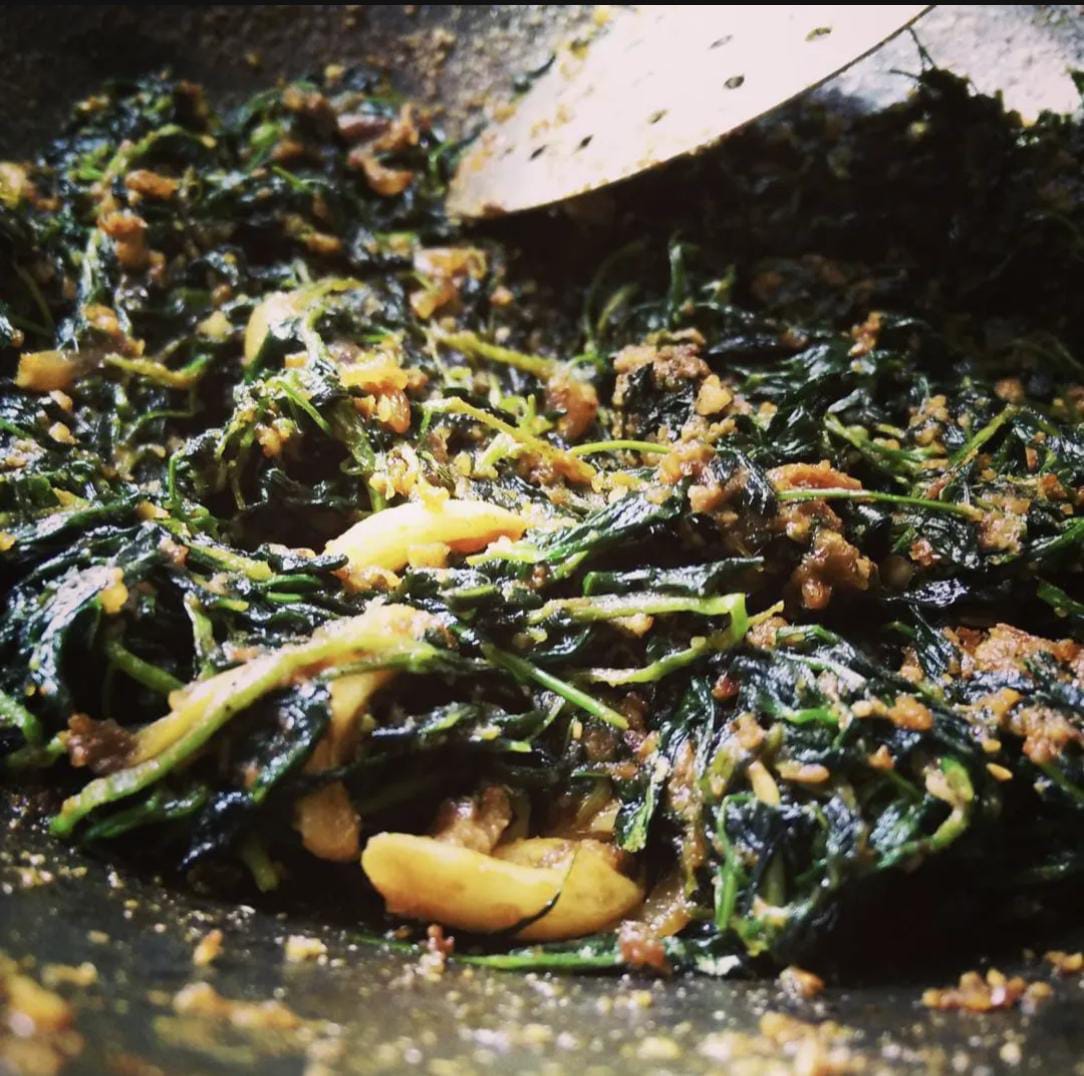
In the chill of the winter dusk, the flames dance and the smoke irritates my eyes. But I’m ready to learn how to master that open flame and the wood-fired chool (chulha) under the watchful guidance of Aba,my grandfather. Born in the 1930s in rural Maharashtra, Aba grew up with chools, like most others from his generation. They were used by families for cooking as well as heating water. Leaving his childhood home quite early on, Aba began to cook out of necessity, the chool proving to be the cheapest means to do so. He continued cooking even after getting married, and well into his later years.
This recipe,and the open-fire cooking technique involving the chool,was passed down to me by Aba. While I had cooked Kala Masalyachi Methi several times before experimenting on the open flame of a wood-fired stove, the first time Aba let me take over it is a memory I hold very close. The sheer unpredictability of the flame,and having to manoeuvre myself to ensure the food didn’t get burnt,only made the recollection fonder.
The simple pleasure of exploring the unknown when it comes to cooking, and the happiness I experienced upon mastering it, is always motivating for me. The familiar methi chi bhaji,a constant in my repertoire,tasted so different. The raw heat emanating from the open flame along with the smoke that permeated the dish elevated it to another level.
| Fresh methi leaves | 1 bunch |
|---|---|
| Green chilli, fresh | 1 chilli |
| Garlic, peeled | 8-10 whole cloves |
| Peanut oil | 2-3 tablespoons |
| Cumin seeds | 1 teaspoon |
| Mustard seeds | 1 teaspoon |
| Onion, finely chopped | 1½ cup | 40 grams |
| Kala masala | 1 tablespoon |
| Turmeric powder | 1 teaspoon |
| Jaggery | to taste |
| Salt | to taste |
| Roasted peanuts, crushed | 2-3 tablespoons |
What You Will Need
Mortar and pestle, a heavy-bottomed cast iron or steel kadhai, chool/chulha, charcoal;
Instructions
Pluck the methi leaves from the stems and set them aside.
Wash the plucked leaves carefully in water to remove any dirt and debris. Allow the water to drain completely and dry the leaves using a towel/kitchen paper.
Light the charcoal or wood to fire up the chool. Ensure that the flame is generous enough.
Remove the stem from the green chilli and it to the mortar along with half of the garlic.
Pound the chilli and garlic until a coarse paste is formed. Keep aside.
Once the coals are red hot, or the wood is fully burning, place the kadhai onto the chool.
Pour the peanut oil in the kadhai and allow it to heat up for about 20-30 seconds. Then add the cumin and mustard seeds.
Once they start popping (10-15 seconds), add the garlic-chilli paste and the chopped onions together.
Cook on the chool for about 2-3 minutes, or until the onion just starts to turn brown around the edges.
Add half of the kala masala and turmeric powder and stir one or two times. Then immediately add the methi leaves.
Stir-fry the methi leaves to ensure the onions and the masala are well combined with the methi leaves as they wilt.
Once the methi leaves are fully wilted, they will start releasing some amount of moisture. Cook until the methi starts drying out, leaving only a little bit of moisture.
Add the remaining kala masala, jaggery, salt and peanuts. Mix well and adjust the salt and jaggery levels according to your preference.
Remove from the chool and serve hot along with rice flour/jowar/bajra bhakri.
Tips
- Methi leaves can be separated from their stems up to one day before cooking the dish; ideally, the fresher, the better. The leaves can be refrigerated in a clean, airtight container wrapped with a paper towel. Ensure that the leaves are fully dried before using.
- While washing the methi leaves, take care to change the water at least 2-3 times to ensure the excessive dirt on the leaves is completely removed.
- Take care to handle the kadhai properly once placed onto the chool (chulha) as the heat cannot be directly controlled. Carefully lower or lift the kadhai by hand to control the temperature of the dish as it is being cooked.
Variations
- If you do not have access to a wood or coal-fired chool, a regular gas or electric stove can be used.
- If kala masala can’t be sourced, goda masala is a good substitute.
Archish Kashikar (@archish_kashya) is a research chef, educator, and mead-maker with a rich and versatile skill set that spans across culinary research and product innovation. As a culinary researcher at The Locavore, he is dedicated to documenting, preserving, and spotlighting the rich culinary heritage of the Indian subcontinent, fueled by his passion for indigenous food history and culture.
You must be logged in to rate this recipe.

Sign in with email

